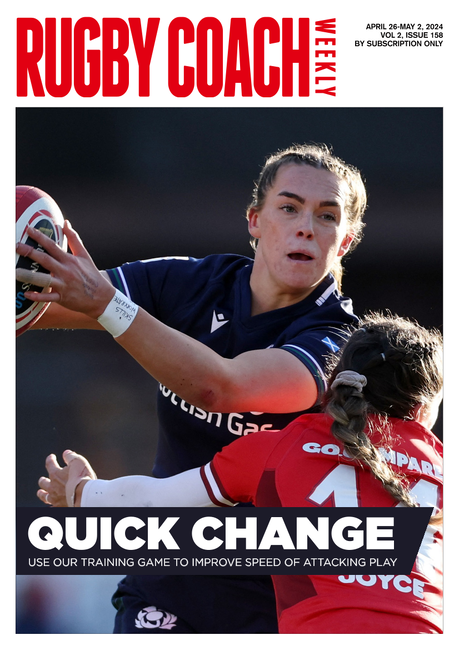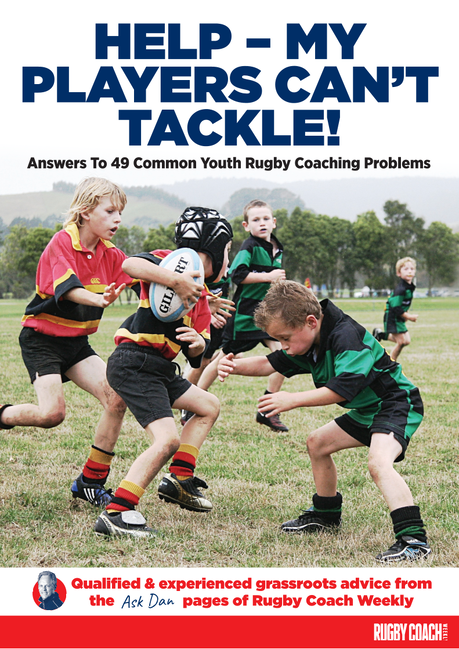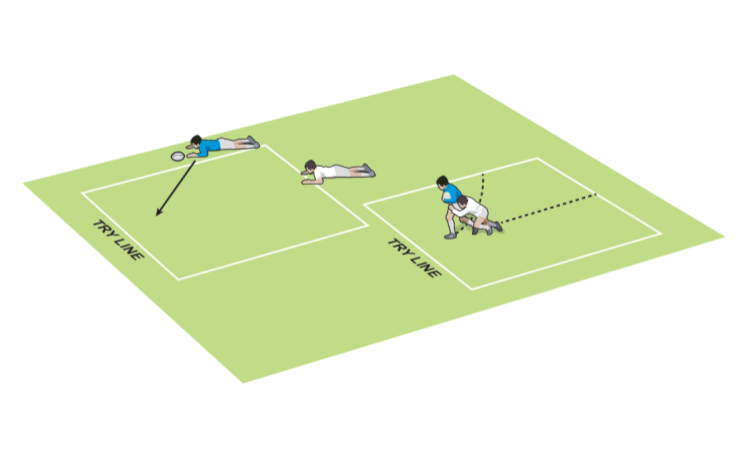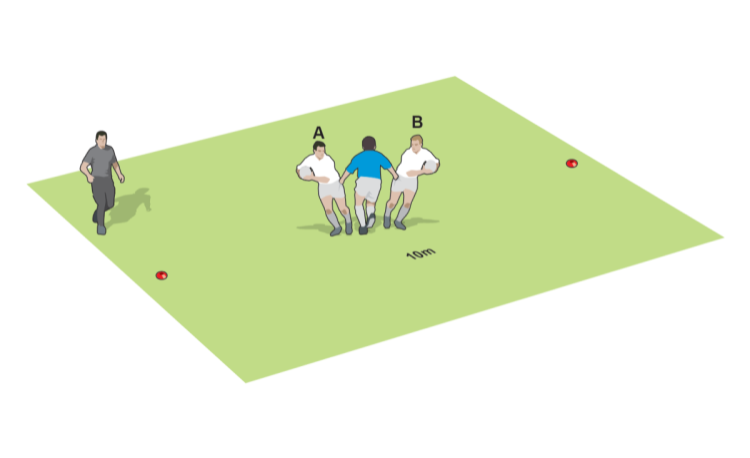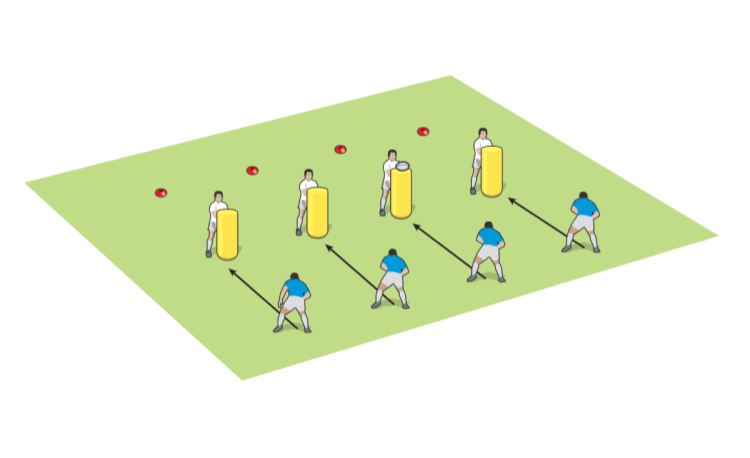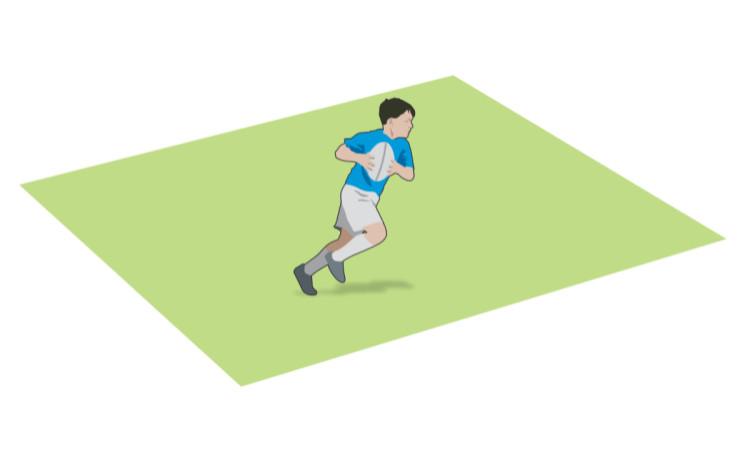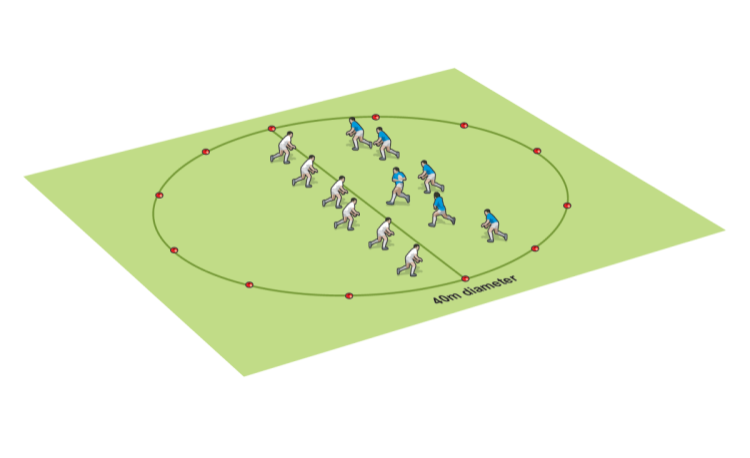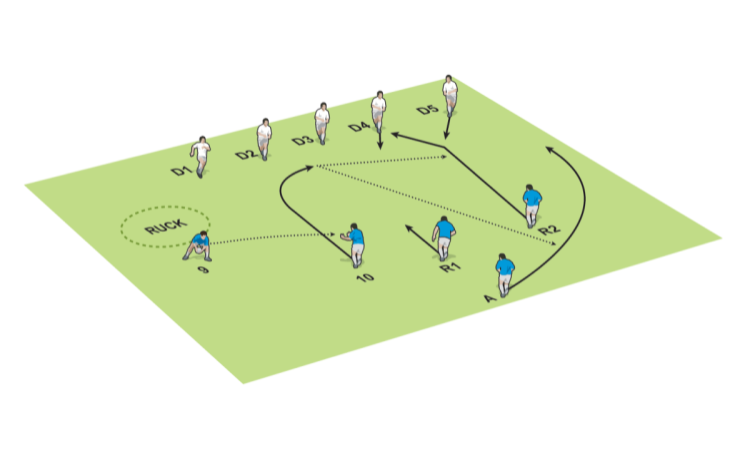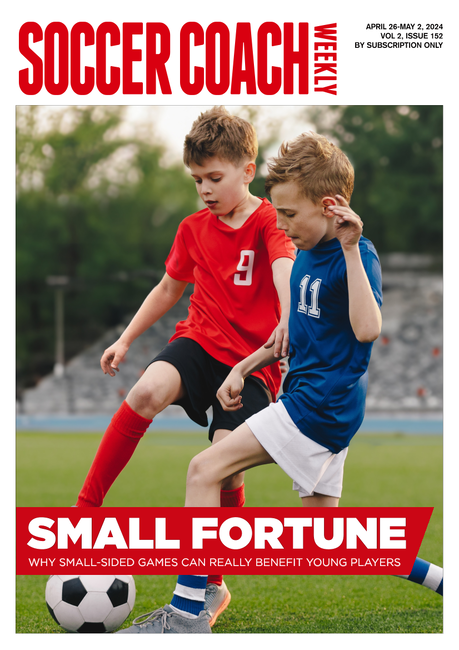You are viewing
1 of your 2 free articles
VIDEO: Tackle and recover
Tacklingby Liza Burgess
Use this low impact tackling exercise to work on both the ball carrier's ball placement after the tackle, tackler technique and recovering.
The emphasis is on completing the tackle, with the tackler's "speed to feet" to then compete for the ball.

Put two players back-to-back. If you have tackle suits, then the ball carrier should wear one.
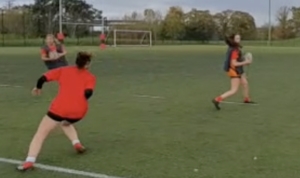
When you say "go", each player runs about 2m before turning. The ball carrier runs straight while the tackler comes forward to make a front-on tackle.

After the tackle, the ball carrier places the ball correctly while the tackler races to their feet to compete for the ball.
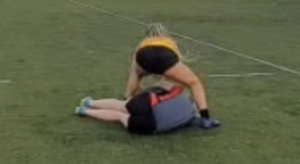
Repeat three times before swapping roles. You can also rotate the ball carriers so the tacklers have a different target.
Hold up either a blue or red cone. If it's red, the tackler goes for the ball. If blue, they step back to the edge of the ball carrier ready to defend. This helps them consider when they should compete or not.
Add in another attacker and defender who run to the side 5m before coming back into the tackle to compete for the ball.
Add in some competition by calling out a winner of each round. Choose a winner not just based on speed, but safe technique, clear release and position competing for the ball.
This is a quick-fire exercise. After the demonstration, in which you focus on the key point for the activity, get the players active, with plenty of energy.
Move up and down the line. Sometimes, be specific to a player, sometimes call out a reminder of the key point.
The emphasis is on completing the tackle, with the tackler's "speed to feet" to then compete for the ball.
HOW TO COACH

Put two players back-to-back. If you have tackle suits, then the ball carrier should wear one.

When you say "go", each player runs about 2m before turning. The ball carrier runs straight while the tackler comes forward to make a front-on tackle.

After the tackle, the ball carrier places the ball correctly while the tackler races to their feet to compete for the ball.

Repeat three times before swapping roles. You can also rotate the ball carriers so the tacklers have a different target.
DEVELOPMENT
Hold up either a blue or red cone. If it's red, the tackler goes for the ball. If blue, they step back to the edge of the ball carrier ready to defend. This helps them consider when they should compete or not.
Add in another attacker and defender who run to the side 5m before coming back into the tackle to compete for the ball.
Add in some competition by calling out a winner of each round. Choose a winner not just based on speed, but safe technique, clear release and position competing for the ball.
COACHING
This is a quick-fire exercise. After the demonstration, in which you focus on the key point for the activity, get the players active, with plenty of energy.
Move up and down the line. Sometimes, be specific to a player, sometimes call out a reminder of the key point.
Premium Books
Newsletter Sign Up
Coaches Testimonials

Gerald Kearney, Downtown Las Vegas Soccer Club

Paul Butler, Florida, USA

Rick Shields, Springboro, USA

Tony Green, Pierrefonds Titans, Quebec, Canada
Subscribe Today
Be a more effective, more successful rugby coach
In a recent survey 89% of subscribers said Rugby Coach Weekly makes them more confident, 91% said Rugby Coach Weekly makes them a more effective coach and 93% said Rugby Coach Weekly makes them more inspired.
Get Weekly Inspiration
All the latest techniques and approaches
Rugby Coach Weekly offers proven and easy to use rugby drills, coaching sessions, practice plans, small-sided games, warm-ups, training tips and advice.
We've been at the cutting edge of rugby coaching since we launched in 2005, creating resources for the grassroots youth coach, following best practice from around the world and insights from the professional game.
More from us
© 2023 Rugby Coach Weekly
Part of Green Star Media Ltd. Company number: 3008779
We use cookies so we can provide you with the best online experience. By continuing to browse this site you are agreeing to our use of cookies. Click on the banner to find out more.

